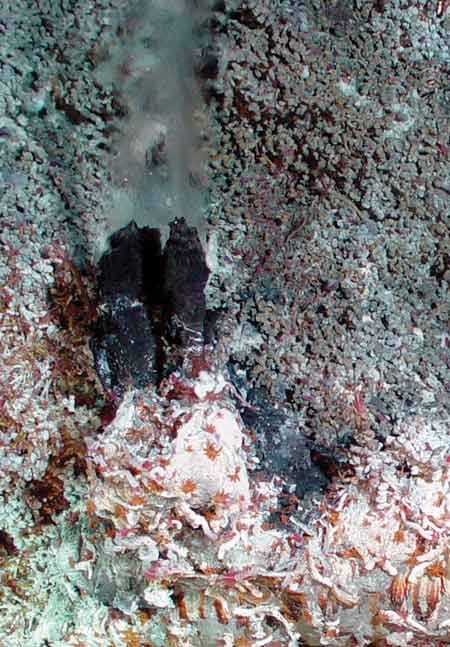Creature Prefers Deadly Scorching Water

Some creatures can really take the heat. And now we know just how much.
Worms that live in deep-sea hypothermal vents have the highest temperature preference of any animal studied, scientists said today.
Examining Paralvinella sulfincola from the deep ocean off the Pacific coast of Washington, researchers found that given a choice, these worms look for places where temperatures reach a scorching 113 to 131 degrees Fahrenheit.
Those are survivable air temperatures, but in water they're deadly for most creatures, because water conducts heat to the body more efficiently. A hot tub, for example, gets unbearable above 105 degrees.
In laboratory settings, the worms chose to stay in sections of the aquarium where temperatures were 122 degrees Fahrenheit (50 Celsius) for the entire duration of a seven-hour experiment.
This is far longer than animals have survived in previous high-temperature exposures for 15 to 30 minutes, which is as long as it took for half of them to die, explained Peter Girguis, assistant professor of organismic and evolutionary biology at Harvard University. (Some microbes, however, can tolerate much higher temperatures.)
"Unlike many animals found in hot habitats, which merely tolerate extreme temperatures, these worms actually prefer temperatures around 50 degrees Celsius," he said.
Sign up for the Live Science daily newsletter now
Get the world’s most fascinating discoveries delivered straight to your inbox.
This unusual preference for the scalding heat may be because of food, since these worms are the only animals that can get to lush carpets of bacteria flourishing around sizzling deep-sea vents.
"We speculate that these worms have evolved to prefer and tolerate these temperatures because it allows them to graze on bacterial lawns that no other organism can access," Girguis said. "Bacteria can survive much higher temperatures than animals, and often grow in lush mats, or lawns, in areas too hot to support animal life."
The study is detailed in today's issue of the journal Science.












